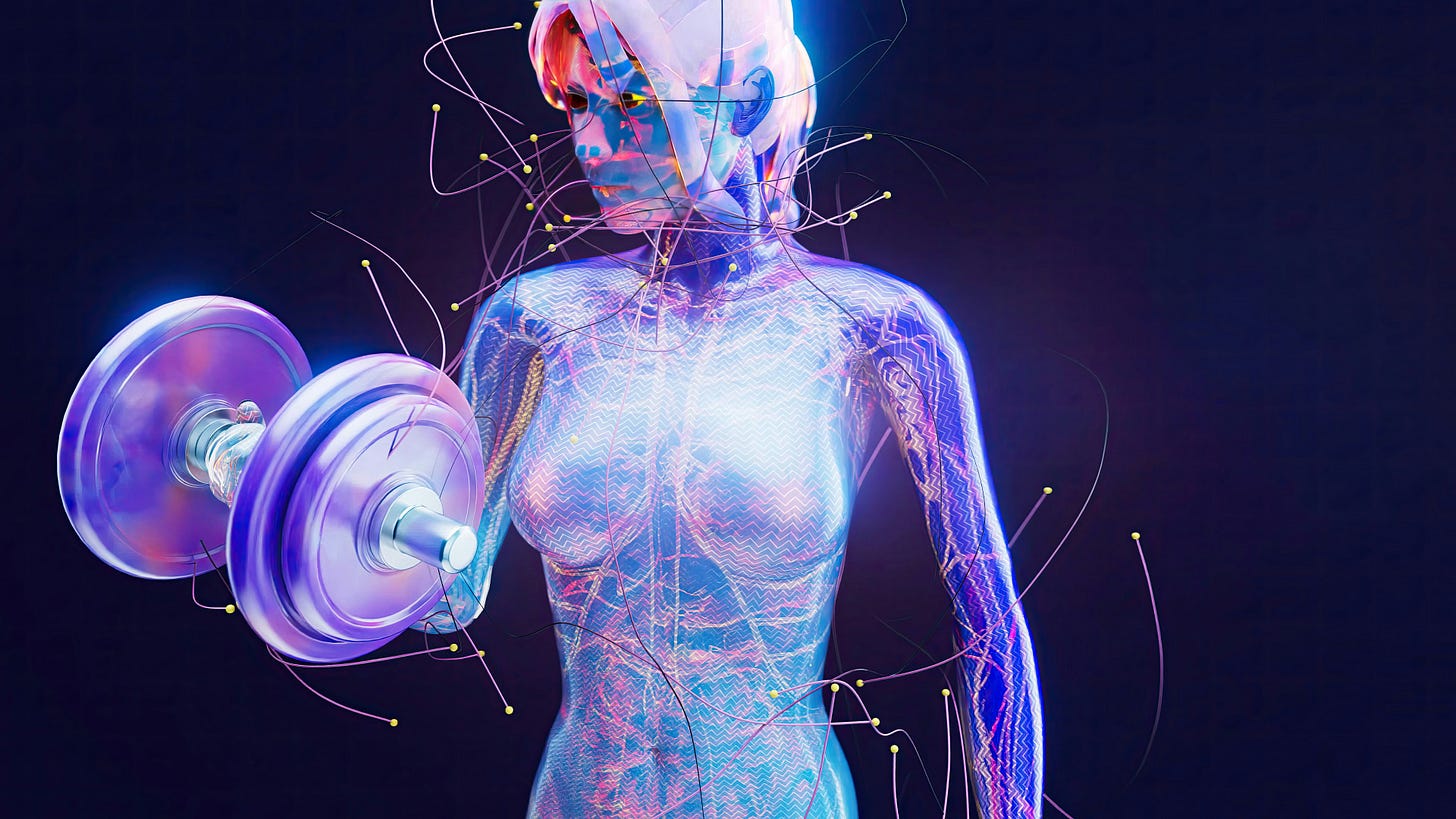The wellness industry loves to talk about “healing” — but it sells it like a competition.
Track your sleep.
Hack your hormones.
Optimize your morning routine.
It’s the same old hustle, just in softer colors.
Underneath what we call “healing,” we’re still managing, measuring, performing — even when we swear we’re slowing down.
The Narrator in Yoga Pants
“You should be calmer by now.”
“You should meditate better.”
“You should be further along.”
This voice in our head managing, measuring, performing — it’s a survival reflex I call the narrator. It evolved to protect you by scanning for danger and predicting what might go wrong. It’s kept you safe — reading the room, anticipating rejection, staying one step ahead of pain.
But when real danger fades, the narrator doesn’t retire; it just finds new threats to manage. In modern wellness culture, those “threats” become mistakes, imperfections, skipped workouts, or even the way you breathe during meditation.
The same reflex that once watched for predators now watches your progress. It says you should be regulating better, journaling more, healing faster.
That’s how wellness becomes another form of vigilance. The result is burnout in prettier packaging: calm as performance, healing as control.
You can’t heal from that state.
You can only perform healing.
The Antidote: Attunement
So much of what we call “healing” still carries tension — a quiet effort to reach the next version of ourselves instead of feeling the one that’s here. Attunement softens that effort. It brings us back into direct contact with what’s present, where growth unfolds naturally from awareness, not pressure.
Attunement is the capacity to sense what’s within, between, and around us — and to respond with presence instead of panic. It’s what happens when the body remembers it doesn’t need to manage life, only meet it.
It isn’t the absence of effort; it’s effort guided by connection instead of control — your nervous system learning that this moment, whatever it holds, can be met directly. And it doesn’t always look calm. Sometimes presence arrives as stillness, sometimes as emotion, sometimes as awe.
Breathwork can open the door. Each slow exhale tells the body, you can be here now.
Nature can too. The light through leaves, the sound of water, the ground beneath your feet — all remind you that presence is not created, only remembered.
Here on In Attunement, we’ll keep exploring these pathways like these as ways of returning to presence and loosening the narrator’s grip.
Where Healing Actually Happens
Attunement doesn’t ask you to hustle.
It asks you to notice what’s already here.
The breath. The body. The moment unfolding.
When the narrator softens, life stops needing your management.
It simply asks for your attention.
That’s the beginning — and the continuation — of real healing.




Beautifully articulated!
These two sentences are so potent:
"You can’t heal from that state.
You can only perform healing."